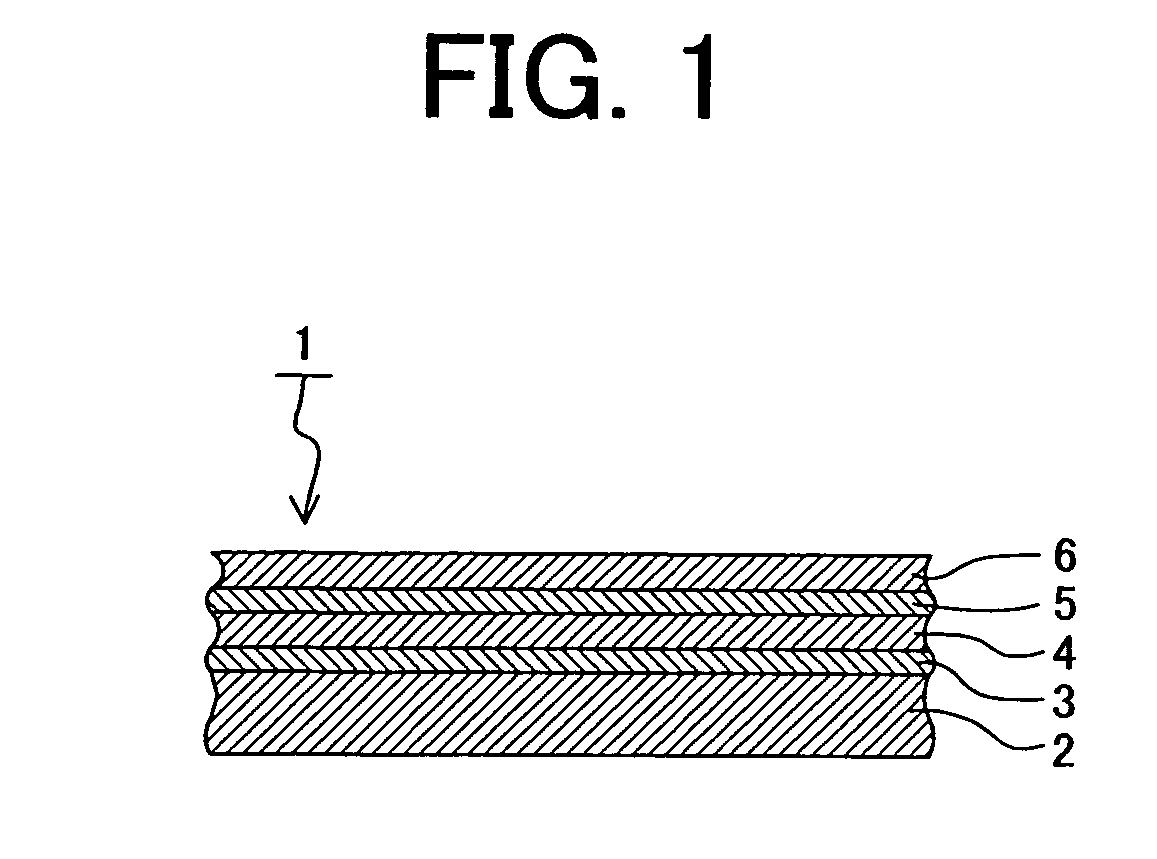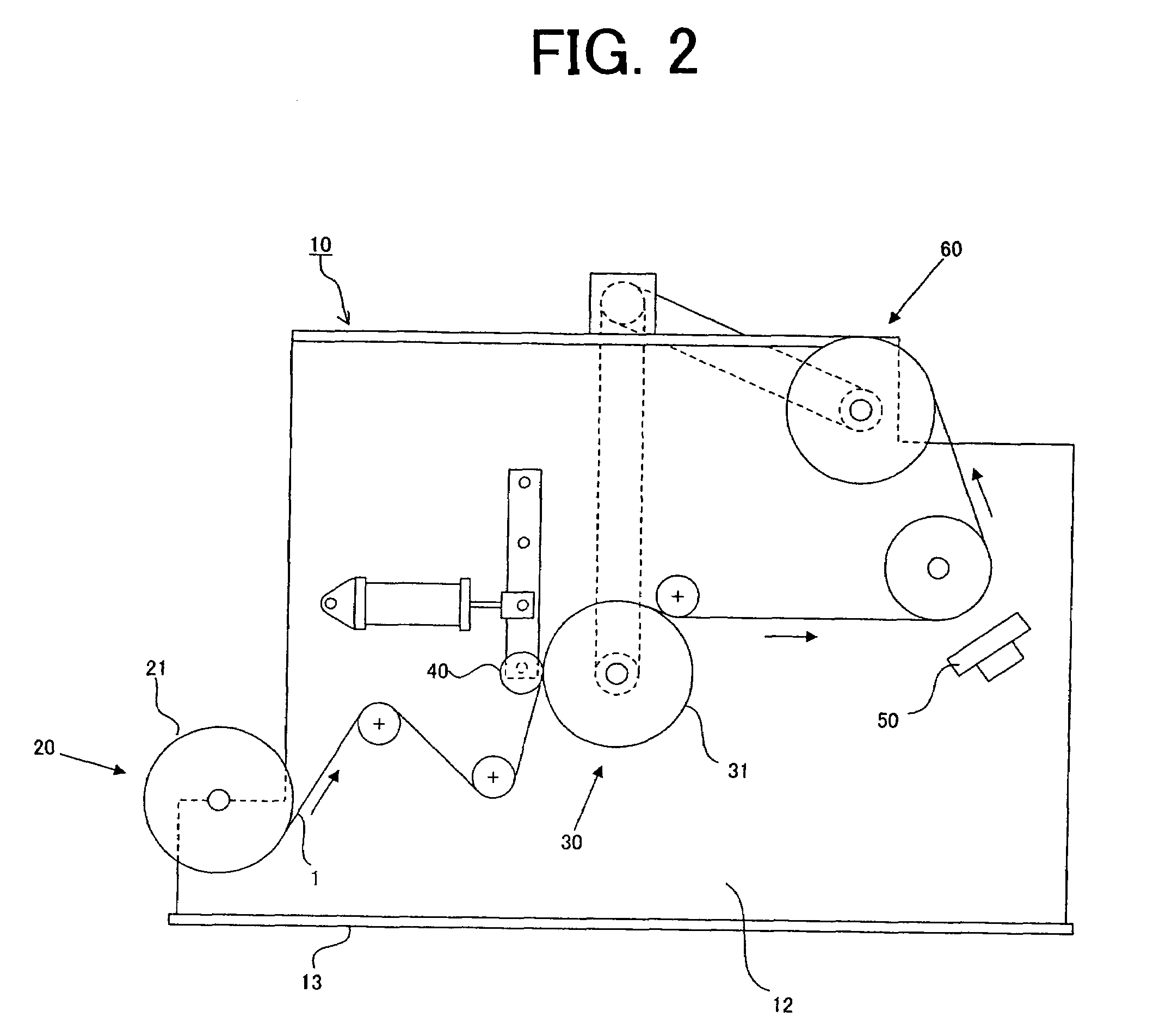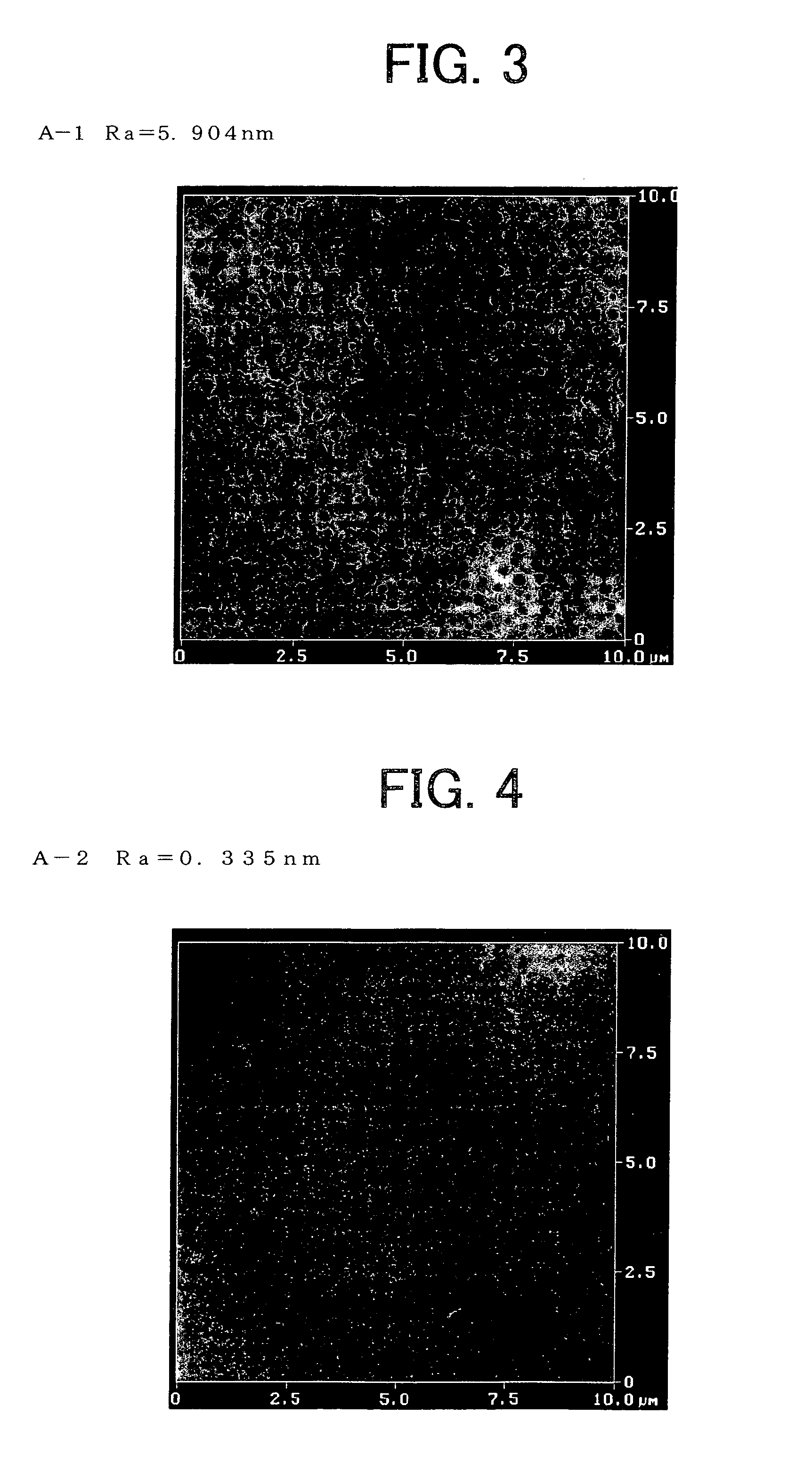Photocurable resin composition, finely embossed pattern-forming sheet, finely embossed transfer sheet, optical article, stamper and method of forming finely embossed pattern
- Summary
- Abstract
- Description
- Claims
- Application Information
AI Technical Summary
Benefits of technology
Problems solved by technology
Method used
Image
Examples
example i series
Example I-1
[0219](1) Production of Binder Resin (A)
[0220]A 2L (liters) flask equipped with a condenser, a dropping funnel and a thermometer was charged with 40 g toluene and 40 g methyl ethyl ketone together with an azo-type polymerization initiator, and the reaction is carried out at a temperature of 100° C. for 8 hours while adding dropwise a mixture liquid of 20.8 g 2-hydroxymethyl methacrylate, 39.0 g methyl methacrylate, 45.0 g isobornyl methacrylate, 20 g toluene and 20 g methyl ethyl ketone via the dropping funnel, and then cooled it to room temperature. A mixture of 23.4 g 2-isocyanate ethyl methacrylate (Karenz MOI, Showa Denko K.K.), 20 g toluene and 20 g methyl ethyl ketone was added thereto and subjected to addition reaction in the presence of dibutylstannum laurate as the catalyst. By IR analysis of the reaction product, the disappearance of an absorption peak of the isocyanate was confirmed and the reaction was finished. The solids content of the resultant resin soluti...
example i-2
[0228]The binder resin (A) produced in Example 1 and other components were mixed in the blending ratio shown below and diluted with methyl ethyl ketone to adjust the solids content concentration to 20% by weight, whereby the photocurable resin composition 2 in Example I-2 was prepared.
[0229]Binder resin (A) (solids content basis): 60 parts by weight[0230]Urethane acrylate (SHIKOH UV-3520TL (trade name), produced by The Nippon Synthetic Chemical Industry, Co., Ltd.) (solids content basis): 30 parts by weight[0231]Release agent (silicone resin, KF-7312 (trade name), produced by Shin-Etsu Chemical Co., Ltd.): 1 part by weight[0232]Photopolymerization initiator 1 (Irgacure 907 (trade name), produced by Ciba Specialty Chemicals K.K.): 2 parts by weight[0233]Photopolymerization initiator 2 (Irgacure 184 (trade name), produced by Ciba Specialty Chemicals K.K.): 3 parts by weight[0234]Spherical colloidal silica (MEK-ST (trade name), produced by Nissan Chemical Industries, Ltd.) (solids cont...
example i-3
[0235]The binder resin (A) produced in Example 1 and other components were mixed in the blending ratio shown below and diluted with methyl ethyl ketone to adjust the solids content concentration to 20% by weight, whereby the photocurable resin composition 3 in Example I-3 was prepared.
[0236]Binder resin (A) (solids content basis): 70 parts by weight[0237]Polyester acrylate (ARONIX M-9050 (trade name), produced by Toagosei Chemical Industry, Co., Ltd.): 20 parts by weight[0238]Release agent (amino-modified silicone resin, KF-8012 (trade name), produced by Shin-Etsu Chemical Co., Ltd.): 3 parts by weight[0239]Monofunctional monomer (isobornyl methacrylate, SR-423 (trade name), produced by Sartomer Company): 10 parts by weight[0240]Photopolymerization initiator (Irgacure 2959 (trade name), produced by Ciba Specialty Chemicals K.K.): 3 parts by weight[0241]Aluminum coupling agent (ALCH-TR (trade name), produced by Kawaken Fine Chemical Co., Ltd.): 5 parts by weight[0242]Spherical colloi...
PUM
| Property | Measurement | Unit |
|---|---|---|
| Percent by mass | aaaaa | aaaaa |
| Nanoscale particle size | aaaaa | aaaaa |
| Nanoscale particle size | aaaaa | aaaaa |
Abstract
Description
Claims
Application Information
 Login to View More
Login to View More - R&D
- Intellectual Property
- Life Sciences
- Materials
- Tech Scout
- Unparalleled Data Quality
- Higher Quality Content
- 60% Fewer Hallucinations
Browse by: Latest US Patents, China's latest patents, Technical Efficacy Thesaurus, Application Domain, Technology Topic, Popular Technical Reports.
© 2025 PatSnap. All rights reserved.Legal|Privacy policy|Modern Slavery Act Transparency Statement|Sitemap|About US| Contact US: help@patsnap.com



